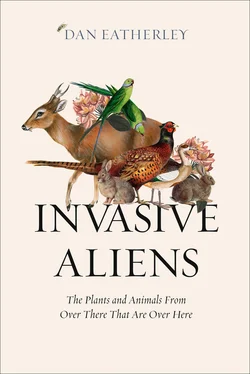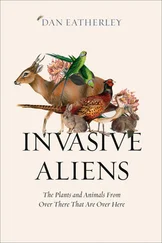In the milder periods, when permafrost meltwaters inundated what would be known as the English Channel, the peninsula became an island. On one such occasion, some 125,000 years ago, humans found themselves shut out of the party altogether: things were warming up once again and a wealth of plant and animal species had spread back into Britain. But by the time people were on the scene, the land bridge from the continent had been claimed by the rising seas. Elephant, hyena, lion, deer, hippopotamus, elk and other animals had the place to themselves, enjoying a halcyon human-free interlude lasting 65,000 years.
Even Homo sapiens , the most successful hominid – in population terms, at least – to arrive in Britain was no great shakes at first. Originating perhaps more than 200,000 years ago, modern humans took their time getting here. Not for millennia would the most substantial exodus from Africa occur, with one wave of migrants moving along the Indian Ocean coastline towards southeast Asia, and eventually Australasia; another meandering north and west across the Middle East and Europe. When, from around 40,000 years ago, small bands of nomads, each with its own distinctive material culture, started to reach our shores, perhaps in seasonal visits, they found they’d been beaten to it.
Homo neanderthalensis had been eking out a living on Britain’s cold treeless steppes for at least the previous 20,000 years hunting, with flint-tipped wooden spears, woolly mammoth, woolly rhinoceros and probably quite woolly bison. The Neanderthals, with their heavy eyebrow ridges, flared nostrils and stocky physiques, were well suited to the hostile conditions. Yet their days were numbered, the British contingent vanishing within a thousand years of the arrival of modern humans. No one knows why.
It’s tempting to equate correlation with causation and accuse Homo sapiens of behaving as the archetypal invasive species, outcompeting and eradicating a vulnerable native with cunning and violence, perhaps passing on some disease for good measure. But the story appears more complicated: the significant amount of Neanderthal DNA in the modern human genome suggests a peaceful, even romantic, coexistence between the two hominids across continental Europe dating back 100,000 years. Could it be that the two varieties of early human preferred to make love not war? In Britain, at least, it seems they had little direct contact, and in any case the argument is academic since dropping temperatures led to the most recent glacial maximum about 22,000 years ago. Any prospect of human existence was snuffed out for another ten millennia. The ice crept forward, smothering everything, wiping the sheet clean. Another fresh start.
The people who returned to a warming Britain from around 15,000 years ago could still be classed as hunter-gatherers, but there was a greater sophistication about them, judging by the plethora of artefacts and art left behind. They were dog-lovers too, grey wolves having been domesticated to mutual advantage, possibly more than once, during or even before this most recent Ice Age. Moving along the Atlantic coast, the humans tracked herds of reindeer, horse, deer and elk north from their southern European refugia. Some perhaps crossed the English Channel in boats, while others may have sauntered through Doggerland, an expanse of terrain today submerged beneath the North Sea.
These people exploited natural resources with unprecedented intelligence: flint-tipped arrows of hazel, fired from bows of elm, felled aurochs (wild ox), red deer and wild boar with accuracy; the slipperiest of fish were trapped in river weirs purpose-built from willow; birds and smaller mammals were noosed and snared; a wider range of plants was collected, stored and cooked than ever before. People were thinking ahead. Fire was used to manage woodland. Freshly burnt clearings, the ash festooned with appetising plant regrowth, could be used to lure hungry game, which was much easier than tracking a deer or boar through dense forest. Nevertheless, impacts on the landscape were minimal. As in previous migrations people travelled light and, save for the plant seeds brought as food or stuck to clothing and bedding, few in the way of new species were conveyed to Britain during this period. Things though were about to change.
Danger. Tree felling in progress. A yellow warning sign greeted us as we approached the kissing gate. I had expected this: Hembury Hillfort’s website requested visitors to ‘observe cordoned off areas with red and white tapes’, and please to ‘not climb on timber stacks’. Thankfully, given my five-year-old daughter’s enthusiasm for outdoors rampaging, neither woodpiles nor tape were in evidence today. The works programme, aimed at reducing root damage to the site’s archaeology, was finished for the season. The tree clearance had a secondary function, to open up the view: that’s what partly drew us here. Hembury didn’t disappoint.
Twenty minutes later saw us picnicking amid bluebells at its southernmost tip. From the 240-metre-high bluff we were offered stupendous views across the Otter river valley towards the coast at Budleigh (the sea itself was lost in haze). The landscape was a hodgepodge of greens, interrupted here and there with the dull copper of a newly ploughed field, a yellow patch of oilseed rape, and the occasional pale minaret of wood smoke. Just visible to the west was Exeter, and beyond the grey eastern tors of Dartmoor from whose direction a brisk wind blew. Birds sang and robber flies buzzed. There was the faint drone of distant air traffic. Above us circled a pair of buzzards.
‘What can you see?’ I asked my daughter.
‘Cows,’ she replied, mouth stuffed with cheese-and-onion crisps.
Today’s miscellany of embankments, trenches, mounds and other vestiges of Hembury’s convoluted history confounds those wishing to understand it. The modern visitor is further disorientated by colossal beech trees which have erupted from the earthworks, clinging on with tentacular moss-covered roots. Yet its secrets are yielding to the archaeologist’s trowel.
Hembury’s strategic location and defensive qualities have long been recognised by those keen to defend themselves and command the region. It’s a real Russian doll of a place: ostentatious double-ditched ramparts dug in the Iron Age, some 3,000 years ago, surround the entire three-hectare monument, which is perched at the edge of the Blackdown Hills in East Devon. Easy access to nearby iron ores and smelting works perhaps justified the investment in time and effort to shift the countless tonnes of earth by hand. Members of the Belgae tribe, from northern France and the Low Countries, subsequently laid claim to Hembury, making their own mark in about 50 BCE with additional defensive ditches and ridges across the centre of the fort. Then, in the middle of the first century CE, the Roman military too added Hembury to its network of forts – apparently taking it without a fight.
More fascinating still was Hembury’s much earlier, Neolithic, incarnation, dating to around 6,000 years ago. This period was the focus of a pioneering series of digs in the early 1930s undertaken by the Devon Archaeological Exploration Society. The work was led by Dorothy M Liddell, a formidable and inspirational personality, and one of an emerging breed of female archaeologists. (A 17-year-old illustrator called Mary Nicol was one of Liddell’s protégés at Hembury. Later, as Mary Douglas Leakey, she would make her own name with palaeontological discoveries in Africa.) Through meticulous excavations, Liddell detected signs of earlier inhabitation at Hembury, including a causewayed (or interrupted) enclosure; post-holes denoting a once-grand timber gateway; the remnants of daub huts; shallow cooking pits, a metre and a half in diameter; and traces of a circular wooden building, possibly a guard house. Her team also recovered flint arrowheads and axes, and other stone implements, along with jet and greyish steatite beads and some of the earliest pieces of southern English pottery. Known as ‘Hembury ware’, the latter included simple round-bottomed bowls with lug handles, made using gabbroic clay, an orange-coloured mineral naturally occurring around the Lizard in Cornwall, 200 kilometres to the west. The finds hinted at a connection to an ancient and extensive commercial network stretching across the region and beyond.
Читать дальше











